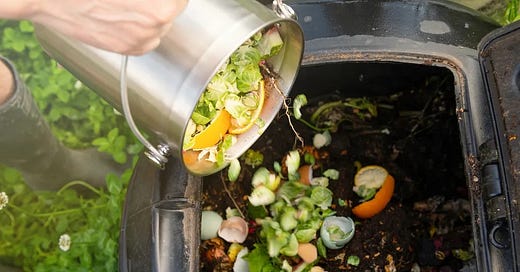5 ways to reduce your food waste
Each year, 30% of the food produced globally goes to waste. Much of it is perfectly edible and nutritious. When you consider that food production accounts for 18% of carbon emissions and 70% of freshwater withdrawals, it’s unthinkable that we could be wasting so much.
Where is all this food being wasted, and what can we do to reduce our contribution?
Where’s the waste?
Food waste occurs across every part of the supply chain and for various reasons.
Food can be left in a field, never harvested, because of labour shortages, or because the cost of transport and processing is more than what the farmers receive for selling.
Some is lost during transport. This is particularly an issue in developing countries where availability of refrigerated transport may be limited.
Other food makes it to the retailer or supermarket but is rejected for failing to meet cosmetic standards. It doesn’t matter if an apple is nutritious and fresh. If it’s ‘ugly’, or the wrong size or shape or colour, it often gets rejected.
Finally, much of the food that we buy as consumers gets thrown out because it rots before we can consume it, or because of confusion over ‘best before’ and ‘use-by’ dates.
Many of the solutions are beyond the control of the consumer, but there are definitely things you can do at home to reduce your waste.
What can you do?
Plan your week
I’ll put my hand up here and say I suck at meal planning. But, you don’t need to plan out every single meal you’re going to eat for the next 7 days to reduce waste. I keep it simple by picking one meal I want to have that week. Then, I think about what ingredients I’ll have left over and I pick another recipe with as much crossover as possible. That’s it. Two meals.
Got leftover stock and pumpkin from the risotto you made? Looks like you’re having soup this week.
Buy ugly
Here’s a secret. A weirdly shaped carrot and a ‘normal’ carrot taste the same. Your food doesn’t have to look perfect. In fact, perfect uniformity and completely unblemished fruit and veg is sometimes a bad sign - what sort of chemicals or industrial processes do you need to use to get the exact same size and colour every time?
Go to a farmers’ market and you’ll see that, unlike at the supermarket, ugly food is normal, and it tastes great!
Get a food waste or compost bin
If you have a backyard, get a compost bin to dispose of your food scraps. This can be a great way to deal with food waste and also improve soil health in your garden.
If you live in an apartment, see if you can get a food waste bin for your complex. Many local councils now run food waste collection programs and you can get a bin for free. While this might not reduce waste, you can at least be confident it’s being composted or disposed of in a responsible way, rather than rotting in a landfill where it emits methane.
Know your dates
If your food is past its use-by date, do yourself a favour and throw it in a compost bin. But, if it’s past its ‘best before’ date, there’s a fair chance it’s still safe to eat! A best before date simply indicates that beyond that date, the quality of the food may be diminished, but it’s still completely safe to eat days or even weeks later depending on the food.
Most people treat the use-by and best before as the same thing, but you might be wasting good food!
Share with friends
Finally, if you’ve made a mess of your meal plan and bought too much food, don’t throw it out. Invite your friends over and make a meal of it. If you’re going on holidays but you’ve still got veggies in your fridge, see if your neighbour needs some.
Food is about connecting with others so before you throw it out, think about sharing it and maybe starting a conversation about food waste.



